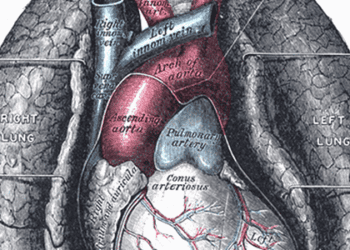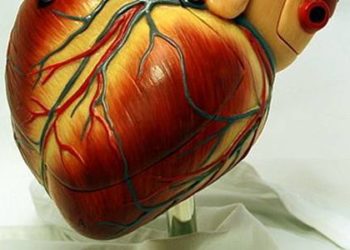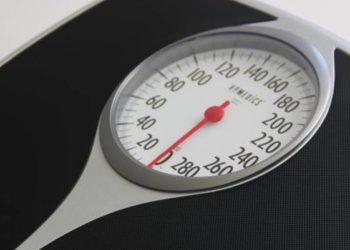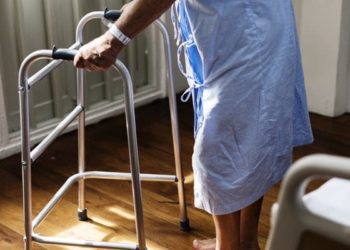2 Minute Medicine Rewind March 31, 2025
Suicide risk and living alone with depression or anxiety
1. In this cohort of adults living in South Korea, individuals living alone with anxiety and depression were associated with the highest risk of suicide.
Evidence Rating Level: 1 (Excellent)
Suicide is responsible for over half a million deaths worldwide every year and is a global health emergency. Globally, suicide rates vary, however, they have been the highest in South Korea, with rates reaching 24.1 suicides per 100,000 individuals. Previous research has shown that living alone has been associated with increased suicide risk, particularly in those with mental health disorders or prior suicide attempts. Although there is prior research exploring the connection between psychiatric disorders and suicide, and others exploring the impacts on health by living alone, their combined effect has yet to be investigated. To address this gap in research, this study explored the combined associations among mental health conditions, living arrangements, and suicide risk. To assess this, the Korean National Health Insurance Service (NHIS) provided 97% of Korea’s population data. Based on data from the NHIS, individuals were characterized as living alone if they were registered as a 1-person household for 5 years or longer. The primary outcome was death by suicide. A total of 3,764,279 individuals (mean [SD] age, 47.2 [14.0] years) were included in the study, including 460 (3.0%) with depression and 232,305 (6.2%) with anxiety. Among the participants, 3,444,286 (91.5%) lived with others, and 319,993 (8.5%) lived alone. Within the group of individuals living with others, 104,902 (3.0%) were diagnosed with depression compared to 7558 (2.4%) individuals diagnosed in the living alone group. In terms of the primary outcome, 235,458 deaths (6.3%) occurred during the study, with suicide accounting for 11,648 (0.3%) of them. Death by suicide was greatest in the group of individuals living alone who had depression (1.2%) and anxiety (0.7%) compared to those living with others without these mental health conditions. Compared to the control group, individuals living alone who had depression and anxiety had a 558% increased risk of suicide (AHR, 6.58 [95% CI, 4.86-8.92]). Once again, compared to the control group, individuals living alone with depression had a 290% increased risk of suicide, while those living alone with anxiety had a 90% increased risk (AHR, 1.90 [95% CI, 1.48-2.43]). Overall, the combination of living alone and the presence of anxiety or depression was associated with an increased risk of suicide.
Practical anemia bundle and hemoglobin recovery in critical illness: A randomized clinical trial
1. In this randomized clinical trial, critically ill adults who received the anemia prevention and treatment bundle had better hemoglobin recovery one-month post-hospitalization.
Evidence Rating Level: 1 (Excellent)
Anemia, characterized by low hemoglobin, is a common condition that presents after surgery and during critical illness. Around half of the survivors from critical illness have remaining functional deficits impacting their quality of life. Identifying modifiable risk factors contributing to impaired recovery, such as anemia, is of utmost importance. Anemia is associated with impaired physical performance along with mortality in those surviving major surgery. The goal of this randomized clinical trial was to compare the effects of an anemia prevention and treatment bundle to standard care on hemoglobin recovery in individuals with acute illness. Individuals were eligible to participate if they were aged 18 years or older and admitted to the surgical or medicine intensive care unit (ICU) for severe anemia (hemoglobin concentration < 10 g/dL). The eligible participants were randomly assigned 1:1 to the intervention or standard care based on the etiology of their anemia and ICU admission indication. The standard care group received care at the discretion of the care team. The anemia prevention and treatment bundle included 3 components: 1) optimized phlebotomy practices, 2) clinical decision support, and 3) pharmacological anemia treatment. The main outcome of interest was the mean difference in hemoglobin levels after 1 month. After meeting the eligibility criteria, 100 patients were enrolled (median [IQR] age, 68 [61-72] years), with 51 (51.0%) randomly assigned to the standard care group and 49 (49.0%) to the intervention group. At 1 one-month follow-up, hemoglobin concentration was significantly higher in the intervention group (median [IQR], 12.2 [11.8-13.0] g/dL) compared to the standard care group (median [IQR], 11.5 [10.2-12.6 g/dL) with a mean difference of 0.69 (95% CI, 0.13-1.20] g/dL; P=.02). Overall, the anemia prevention and treatment bundle was well-tolerated and resulted in improved hemoglobin concentrations in critically ill adults post-hospitalization.
1. In this randomized clinical trial, the use of near-infrared spectroscopy and hemodynamic monitoring did not provide additional benefits in reducing postoperative complications in adults undergoing off-pump coronary artery bypass grafting (CABG).
Evidence Rating Level: 1 (Excellent)
Cardiac surgery complications are serious and often occur with more than one presenting at a time. Some complications include cardiac issues, postoperative delirium, cognitive decline, and acute kidney injury, among others. One factor that contributes to these complications is organ and tissue hypoperfusion. This study tested if perioperative care guided by cerebral (SctO2) and somatic (SstO2) tissue oxygen saturation combined with hemodynamic monitoring reduced the incidence of postoperative compilations in patients undergoing off-pump coronary artery bypass grafting (CABG). The eligibility criteria included being 60 years of age or older and having a scheduled time for an elective off-pump CABG. During the surgery, the hemodynamic parameters of each patient were monitored. The primary outcome consisted of any serious complications occurring within 30 days postoperatively. While secondary outcomes included the individual components of the primary outcome, the occurrence of atrial fibrillation 30 days post-operatively, and the length of stay in the hospital. The participants were equally randomized to receive either guided or standard perioperative care. After being deemed eligible, 1960 individuals were included in the study. Among these, 967 participants received the guided care, while 974 received the usual care. During surgery, patients in the guided care group spend significantly less time with tissue oxygen saturation levels outside ±10% of their baseline for left forehead (32.4 vs. 57.6, P<0.001), right forehead (37.9 vs. 62.6, P<0.001), and forearm (14.8 vs 44.7, P<0.001), compared with the usual care group. A total of 47.3% (457 of 967) of patients in the guided care group and 47.8% (466 of 974) of patients in the usual care group had primary complications (unadjusted risk ratio 0.99 [95% CI 0.90 to 1.08] P=0.83). The secondary outcome with the greatest difference between the two groups was pneumonia, which occurred in 9.1% (88 of 967) and 12.4% (121 of 974) of patients in the guided versus usual care group, respectively. In summary, including multisite tissue oxygenation to standard perioperative care protocols does not provide additional benefit for patients undergoing off-pump CABG.
1. In this cohort of individuals with hemophilia, the physical activity levels and step count did not significantly differ between severity phenotypes.
Evidence Rating Level: 1 (Excellent)
Hemophilia is a bleeding disorder characterized by blood that does not form clots. It can be divided into hemophilia A, due to a deficiency in factor VIII or hemophilia B, a deficiency in factor IX. Physical activity (PA) is recommended for individuals with either type of hemophilia, although the amount of PA is still under investigation. In patient populations where joint pain can limit movement, one way to assess overall strength is by measuring grip strength. Research has shown that grip strength can be a predictor of fall risk. Based on this information, the goal of the study was to determine how the severity phenotype influences the level of PA in patients with hemophilia (PwH), and understand the relationship between PA and bone quality, specifically bone mineral density (BMD) and trabecular bone mass (TBS) and lean mass. Individuals included in the study were adult males with mild, moderate, and severe hemophilia A or B. Each eligible participant tracked their PA with an electronic activity tracker worn for seven consecutive days while also utilizing an activity diary. A total of 223 PwH (median age 43 [30, 56] years) were included in the study. Among these individuals, 45 had mild, 46 had moderate, and 132 had severe hemophilia A or B. The amount of step activity/day was 7392 [4981, 10579] within the entire cohort and did not significantly differ among the hemophilia severity types (p=0.162). Similarly, the subjective PA did not differ significantly between the phenotypes (p=0.459). There was a positive correlation between lean body mass and BMD (rho=0.309, p<0.001), but not between lean body mass and TBS (rho=-0.11, p=0.134). While there was a positive correlation between PA and TBS (rho=0.202, p=0.005). There was also a positive correlation between handgrip strength and BMD (rho=0.361, p<0.001), TBS (rho=0.221, p=0.021), and lean mass (rho=0.287, p=0.003). Overall, self-reported PA and step activity did not differ significantly between the severity groups.
1. In this randomized clinical trial, the use of ketorolac in patients with Acute Type A Aortic Dissection (aTAAD), was not associated with a significant difference in efficacy or safety. However, it was associated with shorter stays in the intensive care unit (ICU), decreased bleeding intraoperatively, and potentially associated costs.
Evidence Rating Level: 1 (Excellent)
Acute Type A Aortic Dissection (aTAAD) is a life-threatening condition. With some severe conditions, surgery or medication can decrease mortality. However, previous research has shown that even with surgical intervention, the rate of mortality remains between 17-25%. As a result, the goal of this study is to investigate possible treatment options to develop a new treatment plan. Research suggests the Ras-related C3 botulinum toxin substrate 1 (RAC1) inhibitor R-ketorolac reduces the severity of aortic dissections in animal models. However, there is a lack of clinical evidence supporting its efficacy in aTAAD. To address this, the randomized clinical trial evaluated the safety and efficacy of ketorolac in patients with aTAAD. The study included 110 participants who were randomized 1:1 using block randomization to either receive ketorolac or the placebo. After one patient discontinued the ketorolac, there were 54 patients in the ketorolac group and 55 patients in the placebo group. After initially presenting to the hospital, each patient received fentanyl for pain management and underwent surgery within 24 hours of symptom presentation. After eligibility was met, 110 participants (mean age 50.7 ± 9.0 years, 78.0% male) were included. Compared to the placebo group, the ketorolac group experienced notably reduced intraoperative bleeding (median: 1.8L vs. 2.0L, P=0.003), shorter ICU stays (median: 8.0 days vs. 6.5 days, P=0.04), and lower total hospital costs (median: 170.43 x10³¥ vs 187.73 x 10³¥, P=0.03). During hospitalization, there were no significant differences in the blood test results between groups. However, on postoperative day 3, the levels of IL-1β (P<0.01) and IL-8 (P=0.03) were significantly lower in the ketorolac group compared to the placebo group. Overall, in this double-blind randomized clinical trial, treatment with ketorolac did not result in a difference in adverse safety effects or efficacy. However, it was associated with a shortened ICU stay, decreased intraoperative bleeding, and lower hospital costs proving to be of possible use in aortic surgery.
Image: PD
©2025 2 Minute Medicine, Inc. All rights reserved. No works may be reproduced without expressed written consent from 2 Minute Medicine, Inc. Inquire about licensing here. No article should be construed as medical advice and is not intended as such by the authors or by 2 Minute Medicine, Inc.







